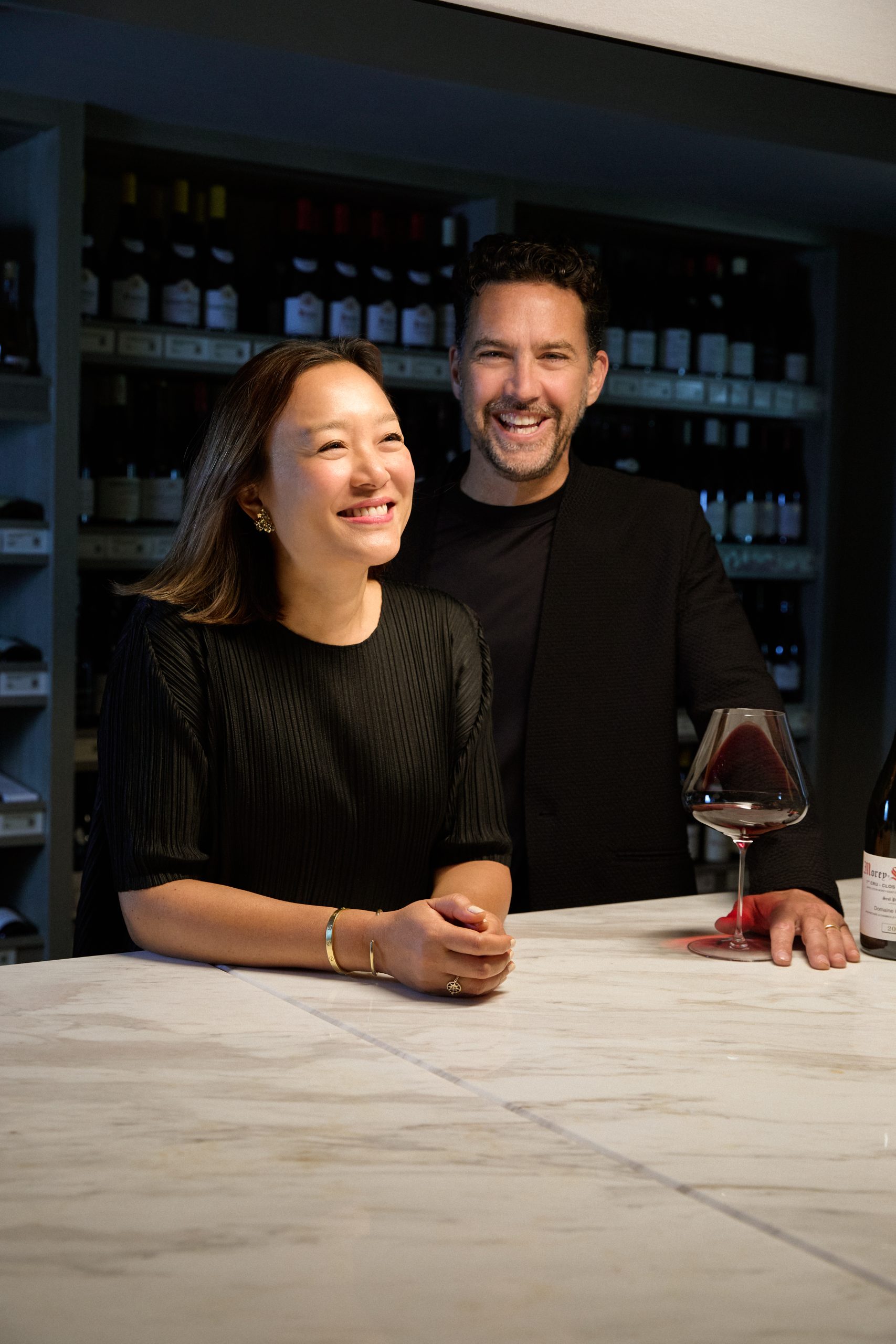COGNAC: Not to be sniffter-ed at
It may be down, but Cognac remains defiantly undefeated by the global recession. Patience Gould reports on this eminently luxurious category’s well-executed efforts to boost sales and maintain its high profile.
There’s something very special about Cognac – it exudes luxury and when ordered out in a bar or restaurant it imbues the drinker, rather like Champagne does, with a sense of sophistication, even if it’s now, in these anti-smoking days, without the once essential accoutrement: the big fat cigar. No surprises then, that Cognac, as with all luxury goods, has taken a “full smack in the face” courtesy of the global recession.
Indeed with entry prices for Cognac starting at around the £20 mark for the VS, rising to the £30 for VSOP and to over £70 for an XO, the eau de vie is not at all well placed to withstand any squeeze on consumer disposable income. Given these prices, some form of trading down is inevitable, but Cognac, and its brands, have a very loyal consumer following – and that, particularly for the smaller houses outside the big four, Hennessy, Martell, Courvoisier and Rémy, is good news.
However, it only takes a swift gaze at the global shipments figures (see boxes, p44 and p46) for the year to date, to note that red, the colour everyone dreads on a bank statement, is far too predominant for all the MATs throughout the year. That said the Cognacais are a resourceful lot – and furthermore have seen it all before. Additionally it should be remembered that this recession comes after a strong period of growth for Cognac so the “industry is in a better shape to withstand a fall” – but at the same time any downturn would reflect badly let alone the breadth and depth of this worldwide one.
“If you compare Cognac with other appellations like Bordeaux and Champagne, it is doing better and the decrease is beginning to flatten out
which is quite positive for the next 12 months,” says the Bureau National Interprofessionnel du Cognac’s Bertrand Durand. “Added to this the shipments for the Chinese New Year have not been made – and that’s a huge event for Cognac.”
Major markets
Disregarding the redness of the figures for the last 10 months, China has certainly been the rising star in the Cognac export league and while in days of yore the UK used to be the number one port of call, vying as it did with the US – it now comes in fourth position behind China and Singapore, while the US takes pole position. Yet despite the volume difference there are similarities between the UK and US markets.
The main one being that in both markets the lion’s share of the action – well over 80% in the UK – is accounted for by the VS quality which makes for a very competitive arena. Hennessy is the brand leader Stateside, while in the UK the number one mantle belongs to Beam Global’s Courvoisier, where it is distributed by Maxxium UK. Beam Global means business too and has given Courvoisier a comfort blanket of £12 million worth of support investment – it clearly intends to hold on to its leading stance.
“The UK is Courvoisier’s number two market after the US,” says UK distributor Maxxium’s UK marketing manager Janice McIntosh. “But China’s coming up in the wings – we’ll give it a good run for its money.”
Among the top four houses in the world, along with Hennessy, Martell and Rémy Martin, Courvoisier has adopted a two-pronged strategy in both the US and the UK which embraces the old and the new. Still steeped in the traditional side of the Cognac arena – the producer has recently introduced L’Essence de Courvoisier.
This is the last creation of Courvoisier’s retiring master blender, Jean Marc Olivier, and with its blend of eaux-de-vie dating back as far as the 1920s, it is necessarily limited. Pitched at the top end of the spectrum it carries a price tag of £1,800 and is only available in high-end outlets. The move not only highlights the relatively “healthy” state of play in the higher echelons of the category but is strategic as L’Essence will act as a quality image umbrella for Courvoisier’s other Cognacs.
Maxxium UK has also appointed a brand ambassador for Courvoisier, Rebecca Asseline, whose main task is to educate the trade on Courvoisier’s quality and 200-year heritage, driving listings across the premium range, including XO, Initial Extra and L’Esprit. Indeed education is a cornerstone of the company’s UK strategy as evidenced by the launch of its Le Nez programme. Le Nez de Courvoisier enhances the Cognac tasting experience by focusing on the sense of smell, which drives taste and creates a greater and deeper appreciation for the highly aromatic, lightly oaked and well-balanced style of Courvoisier.
“Cognac is a complicated category and Le Nez makes it easier for the consumer, via its sensory nature, to realise the differences between the different qualities – each style has its own DNA,” says McIntosh. “It’s working very nicely as an educational tool.”
Cocktail culture
This is all very traditional marketing for Cognac, but Courvoisier has also taken to the cocktail arena aided and abetted by its Exclusif quality. This is an excellent VSOP Cognac in its own right which has been blended to make it more suitable as a mixer.
Partner Content
“Cocktails are a major part of our strategy as it’s where the recruitment is,” says McIntosh. “It’s a good way of getting new consumers to Cognac.”
In August this year the company launched its “I Don’t Know” Courvoisier cocktail campaign, in which bartenders from 47 bars across the UK were invited to take part. Support advertising in selected media directed consumers to the participating bars with the promise of a complimentary cocktail. “The ‘I Don’t Know’ campaign will recruit new drinkers by reaching those who would not normally consider Cognac in cocktails,” says McIntosh. “By working closely with bartenders we will help them build their Cognac knowledge.”
All this activity is not only good for Courvoisier the brand – but the Cognac category as a whole. The level of spend is commensurate with Courvoisier’s position as market leader – with its heartland in the VS sector the front line of the UK’s Cognac market and as such the most competitive.
No surprises then that many producers big and small only concentrate on the VSOP and qualities above – this is a
good move considering that in times of recession the drinking-less-but-higher-quality syndrome kicks in. Furthermore many producers have been concentrating their sights on the developing Cognacs which sit between the VSOP and XO qualities.
Arguably the most notable of these players is Rémy Martin. Now distributed in the UK by the William Grant-owned First Drinks, having extricated itself from the global Maxxium fold, Rémy dominates the VSOP sector in the UK, and has done for some time. “It’s a pretty mixed bag at the moment in terms of depletions – but it’s no easy time for VS,” says First Drinks’ senior brand manager Anthony Habert. “VSOP is holding up fine. Consumers are drinking less often, but going for better quality when they do.”
That said – the XO category is “struggling” – but then Rémy has launched Coeur de Cognac, which in terms of both quality and price (around £38) is roughly midway between VSOP and XO. It’s a move that’s paying off too in selected European markets, and in the UK, according to Habert, its sales have been “barnstormingly good”. Support activity has centred round the taste of the Cognac, and early next year the company will join forces with the Wapping Project pairing Coeur de Cognac with desserts.
“It’s all exciting and upbeat,” says Habert. “The focus on the higher styles makes for a good value business.”
The big freeze
While Rémy prides itself on tradition and the quality of its Cognacs, the company is not cold shouldering the cocktail phenomenon, and it is not averse to innovation. Indeed it is busy introducing the Rémy IceBoxx into 10 high-end bars around London, and preparing to go national next year. The IceBoxx freezes its VSOP Cognac down to -18ËšC, which makes for quite “a different taste sensation” – and its appeal to the younger generation is obvious. Both short and long serves will be promoted, such as the Rémy Ice Shot, the classic Sidecar and the Champagne Cognac.
“The IceBoxx is designed to capitalise on a new trend of drinking Cognac brought over from the US and gives people in the UK the opportunity to try frozen Cognac and join in this pop-culture phenomenon,” says Habert. “We are committed to supporting the on-trade and are confident that the IceBoxx will drive overall profits for the trade, and money through tills of individual bars.”
Outside the mainstream sectors there are still rich pickings to be had for the smaller brands of Cognac, and one enjoying something of a renaissance is Hine. Like Rémy, Hine Cognac also has new UK distributors. Following the closure of Paragon the brand is now with Pol Roger – and by all accounts it’s a marriage made in heaven – more importantly it is proving very effective.
In the six months since then Pol Roger has consolidated Hine’s position in the UK market and begun developing Hine distribution and sales through prestige retailers such as Harvey Nichols and Selfridges and on-trade accounts such as The Coburg Bar at the Connaught Hotel.
“Hine is now on a much stronger footing,” says Pol Roger’s Nick James. “It’s a hands-on kid-glove approach and the focus is very much on the Rare VSOP and above – the strong feature about Hine is that it’s small but has plenty of scope – we are not in the mainstream.”
Indeed sales of Hine Rare VSOP have been “particularly encouraging” and are showing a “very healthy increase” on 2008. A special Christmas pack is being offered to customers for the holiday season which includes a bottle of Hine Rare VSOP, a Hine Antique XO miniature and two Hine nosing glasses. As to the next 12 months the company is “very optimistic” and preparing for the relaunch of Hine’s XO – the Cognac as well as the packaging.
To sum up then the UK Cognac market is much like the curate’s egg – in that it is good in parts. Tempting the consumer to lash out upwards of £20 for a bottle is no mean feat, particularly in the teeth of a recession – and although the category’s trading statement is very much in the
red, producers are concentrating on what matters – quality of product and maintaining a top-notch image.
Patience Gould, December 2009




